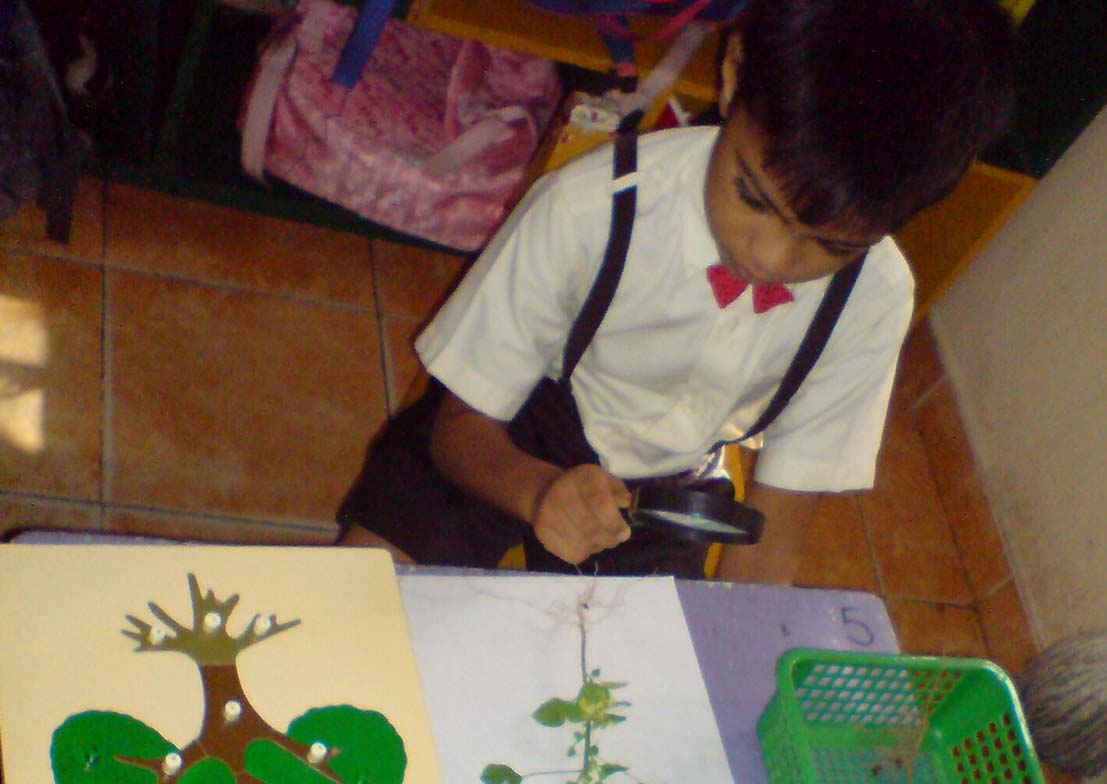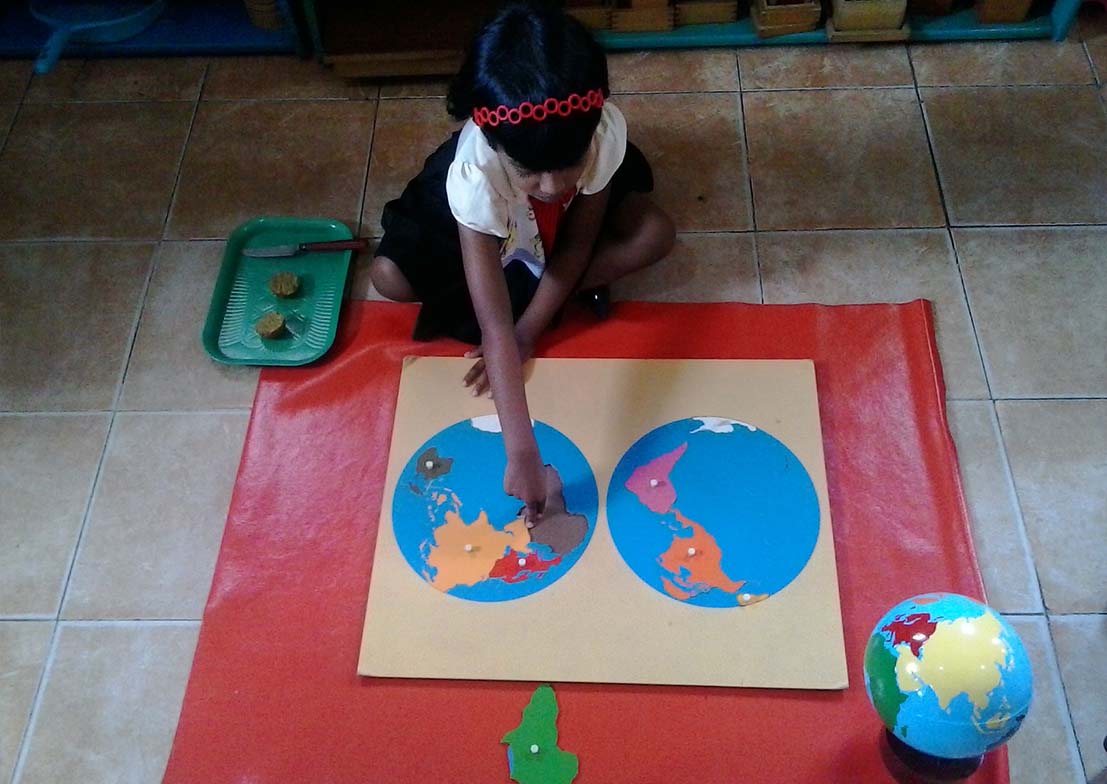What is Montessori education?
"At birth, the child leaves a person – his mother's womb – and this makes him independent of his bodily functions. The baby is next endowed with an urge, or need, to face the world and to absorb it. We might say that he is born with 'the psychology of world conquest.' By absorbing what he finds about him, he forms his own personality." (The Absorbent Mind, Chapter 8, p. 84)
Exercises of Practical life
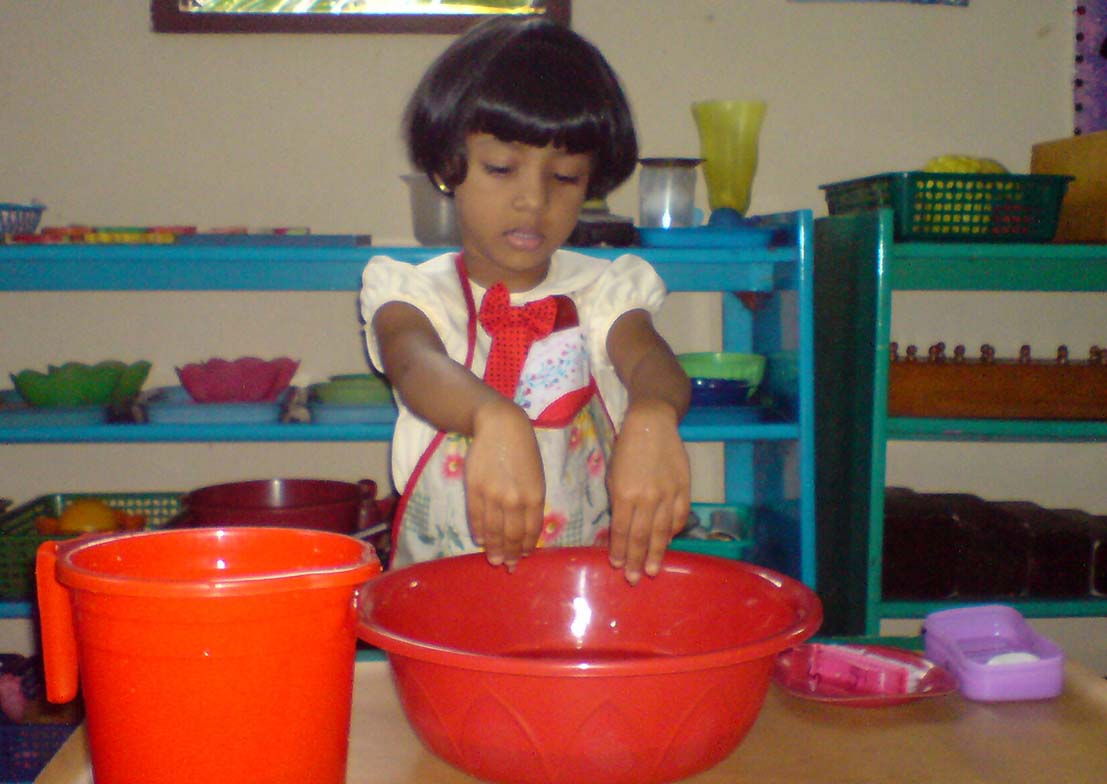
Dr. Montessori emphasized the Exercises of Practical Life as the first lessons that the young child is introduced to in a Montessori environment. This is because they immediately begin to satisfy the young child’s inner frustrated desire for skills and self-sufficiency.
The child first does these exercises for himself because he is perfecting himself. Then, when the child becomes aware of the group he is a part of, he does the exercise for the benefit of the group and for the environment.
Exercises of practical life include pouring, polishing, washing, buttoning, etc. The indirect aim of these exercises is to help the child develop his ability to concentrate, gain independence and co-ordination of movement. Children learn important life skills as they manipulate materials in Practical Life. Even more important is the confidence that the child gains when he achieves a new goal. They also strengthen his hand in preparation for other activities such as writing. The child’s repetition of these activities leads to the development of new skills and hand/eye coordination.
Sensorial
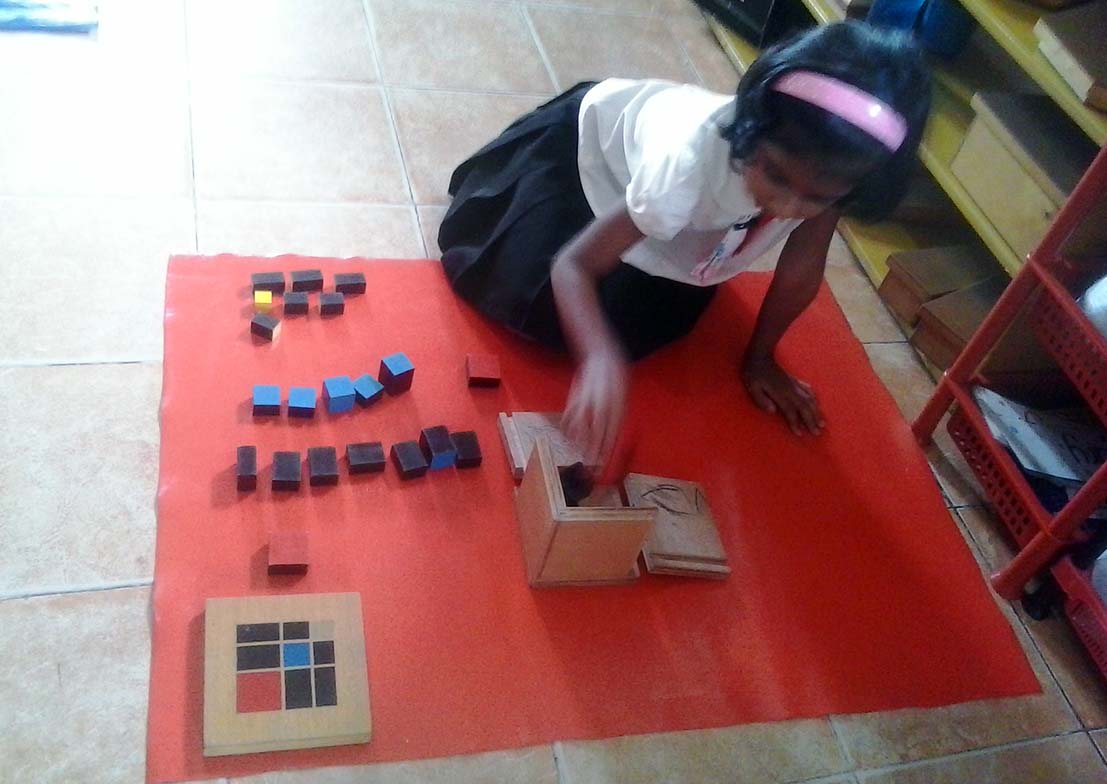
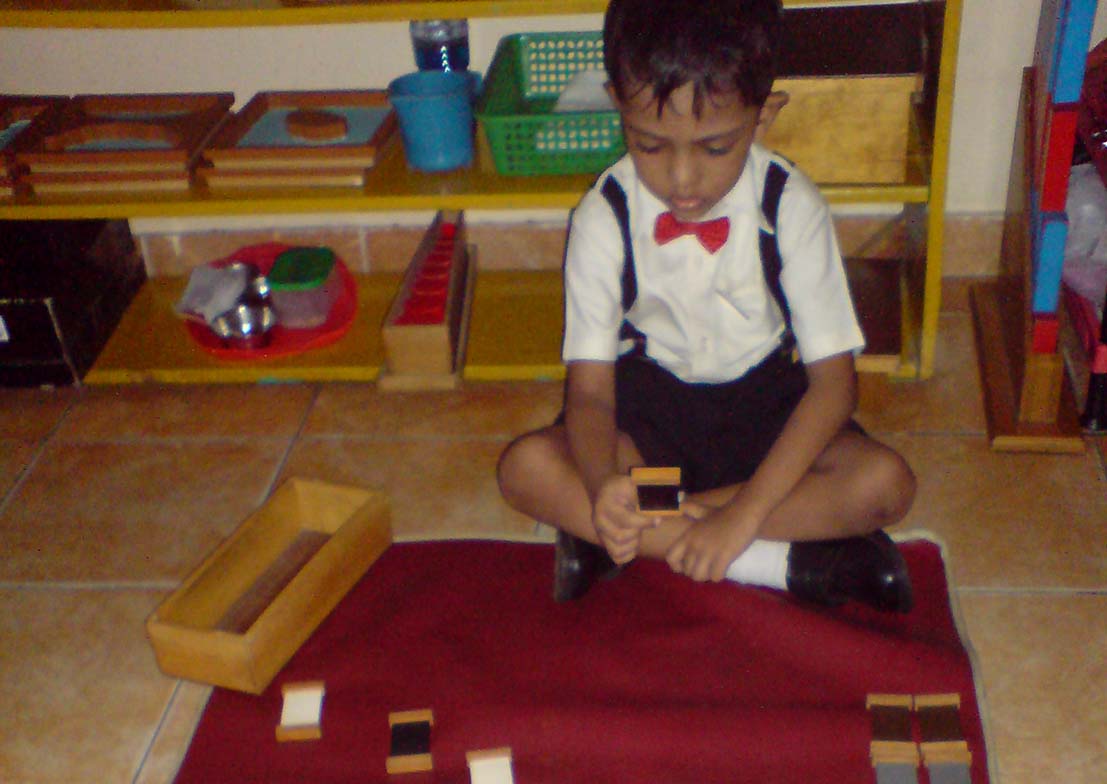
From zero to three years, the child absorbs millions of impressions through his senses. At three to six, this continues but with an important difference. As a child ages from three to seven, he begins to develop/recognize the five basic senses; Touch, Taste, Smell, Sight and Sound. The Montessori Sensorial apparatus is scientifically designed to refine order and classify the impressions in the environment. They learn about shape, size, length, colour, weight, texture etc.
The most important component for the child’s development is concentration. The child who concentrates is immensely happy and is able to interpret the world in a more coherent way.
This area builds a foundation for Math, Geometry and Language.
Mathematics
Dr. Montessori believed that children have a mathematical mind. When introducing Mathematics to a child, quantity is introduced first and then the symbols. They learn the quantities of one to ten before tracing the sandpaper numerals. Then they learn to associate quantity with the symbol. They also learn the sequence of numbers and, the importance of zero. The Math materials are set up for the young child to learn each and every math concept by the use of beautifully designed math materials. Through the use of the senses the child experiences quantity. They can see and feel the difference between one and ten, one and one hundred, and one and one thousand.
Number Rods allow a child to physically understand quantity; these materials provide a foundation for understanding the four operations in Math. In doing addition, subtraction, multiplication and division, the children actually carry, borrow and change the golden beads to reach their answer. These operations not only teach the child to calculate, but they provide a deep understanding of how numbers function. Gradually Math materials lead the child towards abstraction.
The child leaves the early childhood environment with a solid foundation in math.
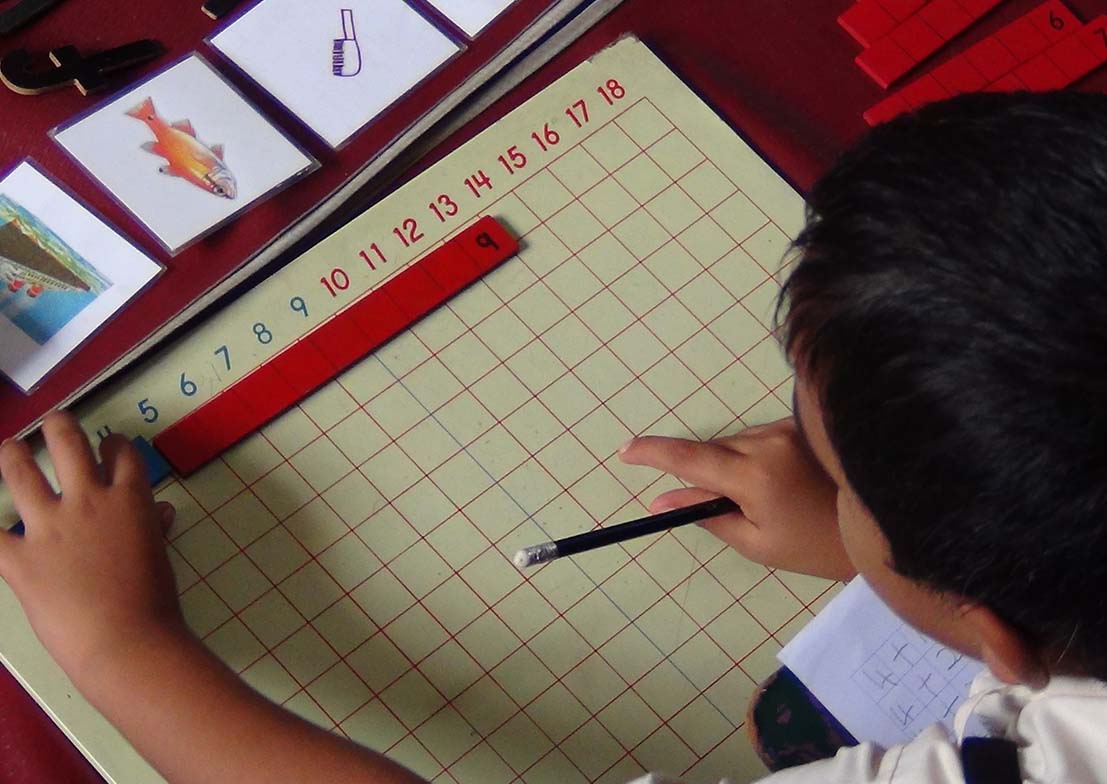
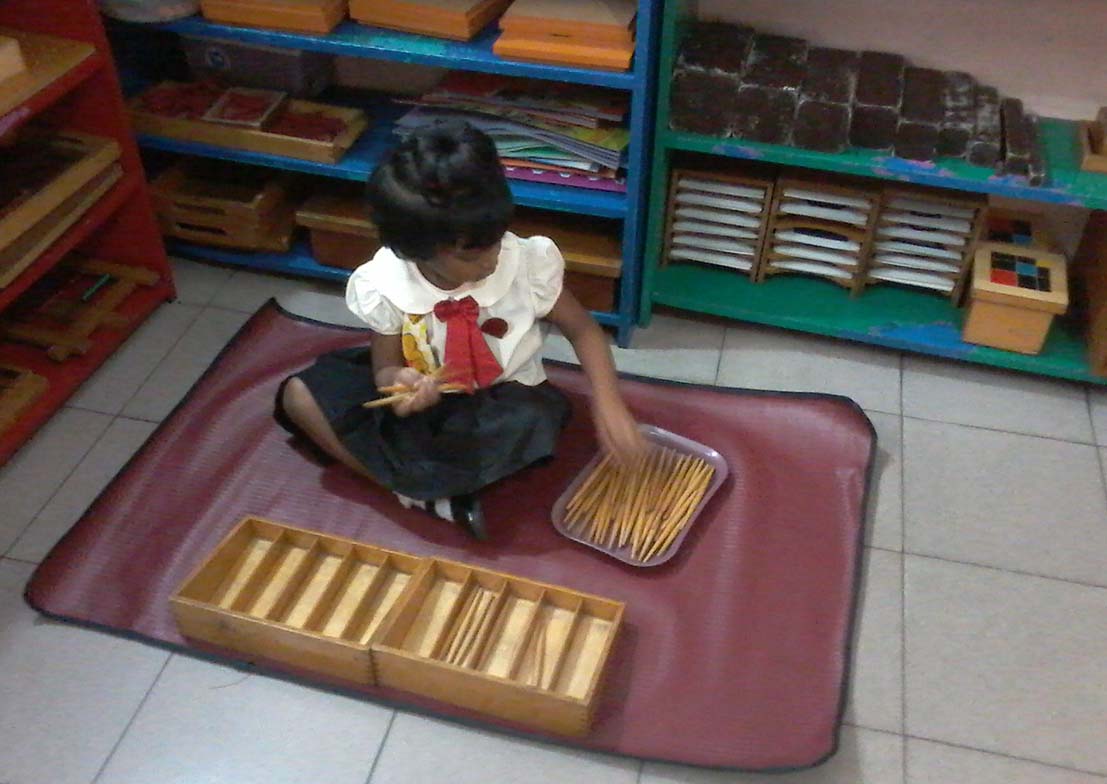
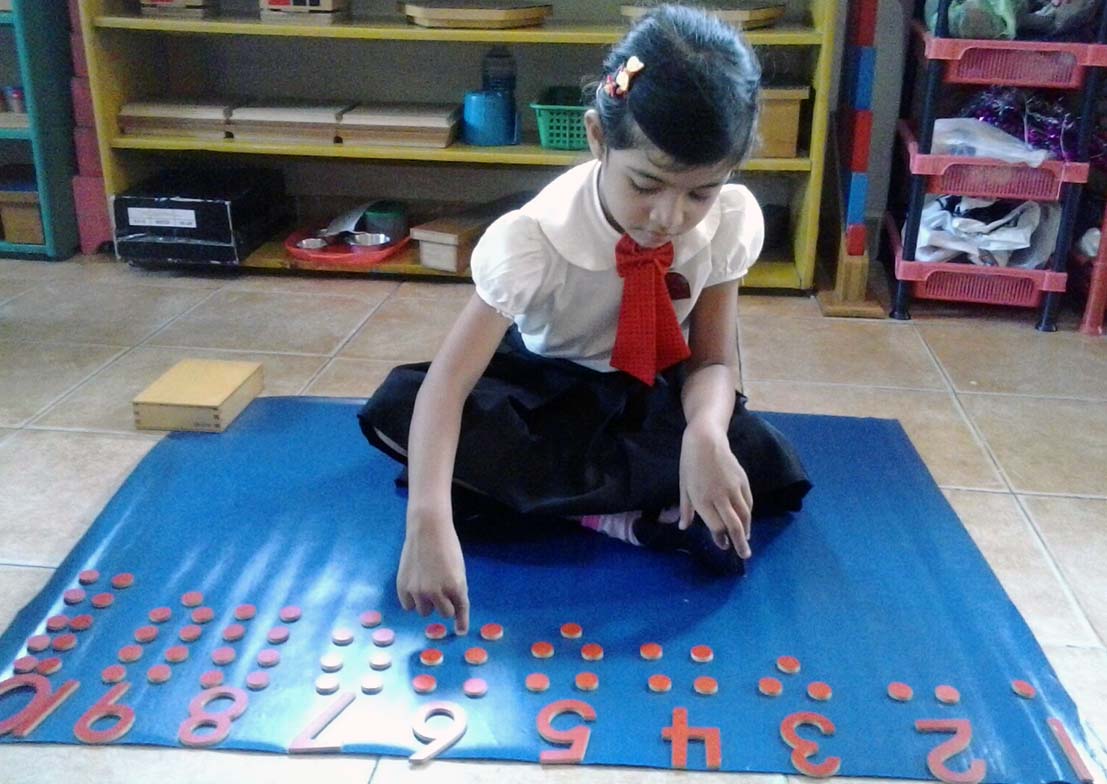
Language & Learning
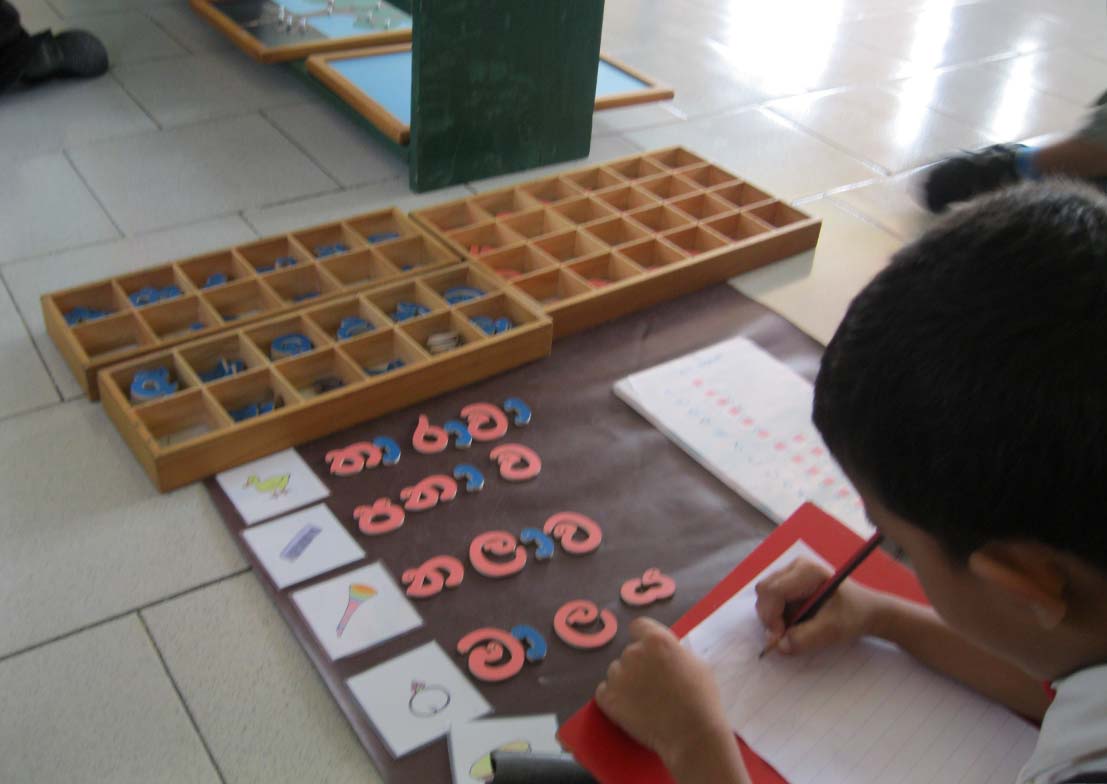
There is a language area, but language is part of the whole environment. A child gains experience through exercise and movement, he co-ordinates his own movements and records the emotions he experiences in coming into contact with the external world. The child laboriously learns how to speak by listening attentively and making those initial efforts which are possible for him. The child learns the names of everything in the environment. At the peak of the child’s sensitivity towards touch we introduce the letters of the alphabet through sandpaper letters where the child traces with his fingers and absorbs it through muscular memory. The sounds of the letters are given instead of the name of the letters and simple phonetic words are made. The Metal Insets help the child with holding the pencil and lightness of touch.
Culture
Culture brings the world to the Montessori classroom. Cultural subjects include geography, botany, biology, music and art.
Geography is the central core to culture studies. We begin with the introduction to Land and Water Forms, Globe and then to the Continents. They work with puzzle maps of the world, continents and countries. These different continents and countries bring the puzzle pieces to life providing a lasting appreciation and respect for all cultures.
Our students also participate in many celebrations which develop an appreciation of the richness and diversity of human culture. This includes Independence Day, Sinhala & Tamil Avurudu, Christmas and other significant celebrations. Our cultural celebrations often involve special food, stories, songs and traditions.
Peace education is also important. This happens when the teacher shows respect for each child. She models how to solve conflicts. She teaches children how to appreciate the acts of classmates. Grace and courtesy is an important part of the environment.
The birthday celebration is a part of our cultural studies. Our “Celebration of life” shares photographs of the child and his past life stories with the other children. It also serves as an introduction to history.
Botany and zoology material include puzzles and cards of the basic parts of plants and animals. The Leaf Cabinet provides the child with a means of classifying the different shapes of leaves.

